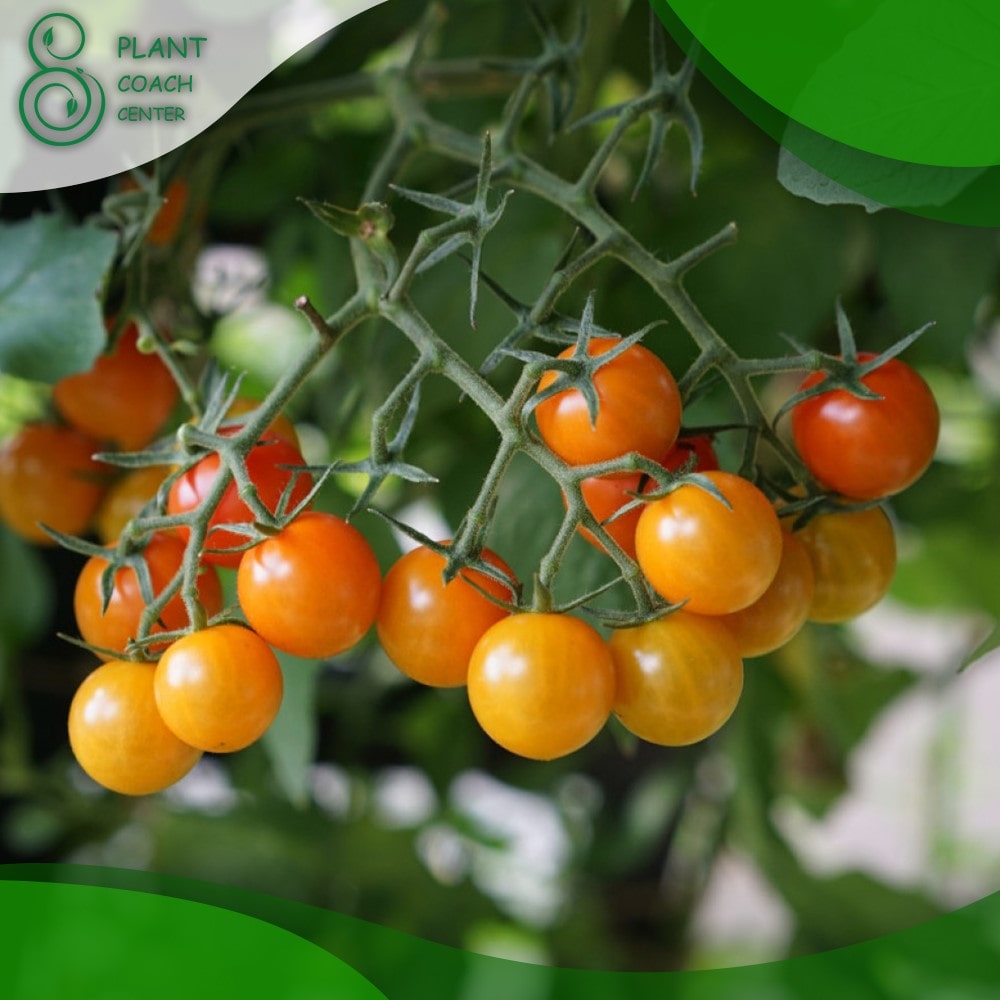When Should I Pick My Tomatoes?
Welcome to the vibrant world of tomato cultivation, where nature’s artistry unfolds in red, yellow, and green hues. As gardeners and enthusiasts alike delve into the rewarding endeavor of growing these luscious fruits, a crucial question emerges: “When should I pick my tomatoes?” While seemingly straightforward, the answer is a harmonious interplay of science, intuition, and taste. Beyond mere aesthetics, the perfect moment to pluck a tomato embodies a nuanced understanding of ripeness, flavor evolution, and culinary potential.
In this article, we embark on a journey through the tomato patch, decoding the secret language of these fruits. We’ll unravel the mysteries behind color shifts and skin textures, explore the tactile finesse of the finger-firmness technique, and consider the multifaceted factors that orchestrate the tomato’s ripening symphony. Whether you’re an eager grower seeking the pinnacle of taste or a culinary enthusiast craving that quintessential burst of flavor, join us as we unlock the art of mastering tomato harvest timing.
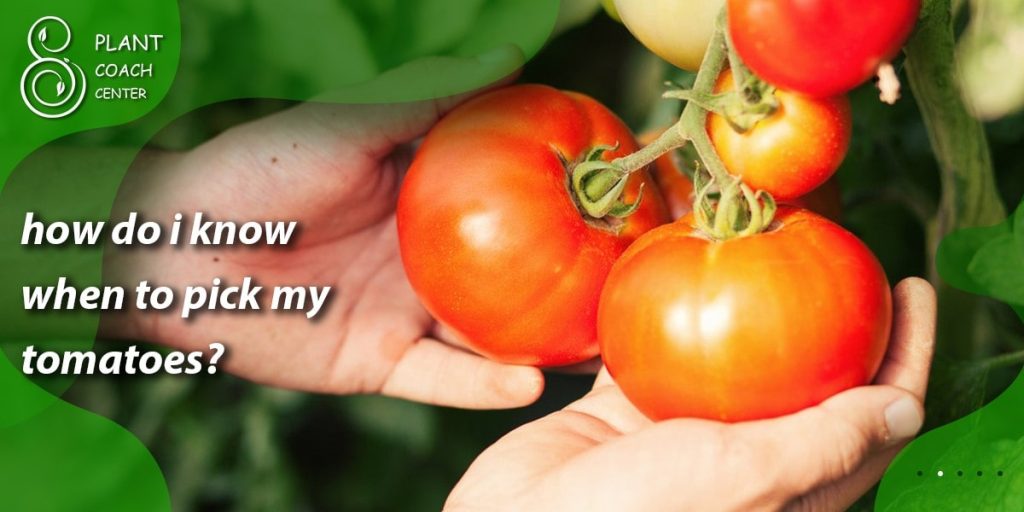
Understanding Ripeness Indicators
Tomatoes, those vibrant jewels of the garden, have a language all their own when signaling their readiness for harvest. You’ll notice a delightful spectrum of colors as you survey your tomato patch, from deep reds to radiant oranges and even gentle yellows. These hues aren’t just visually appealing but also key ripeness indicators. A tomato’s transition from green to its ultimate color signifies the accumulation of essential nutrients and sugars contributing to its flavor profile.
Texture, too, has a tale to tell. Gently run your fingers over the tomato’s skin – a smooth, slightly yielding texture suggests ripeness, while a hard, unyielding surface indicates underripeness. Wrinkles, cracks, and blemishes can also be cues. Yet, don’t be quick to judge a tomato solely by its appearance. Varietal differences can lead to variations in color and texture, so combining visual and tactile assessments is essential for a holistic understanding.
An often overlooked indicator is the tomato’s scent. As tomatoes ripen, they release aromatic compounds contributing to their fragrance. A tomato with a rich, earthy aroma at the stem end is likely nearing peak ripeness. Remember, each tomato variety has its unique olfactory signature, so familiarize yourself with the scents of the types you’re cultivating.
Understanding these ripeness indicators is akin to speaking tomato fluently. It’s an art that requires observation, intuition, and a willingness to embrace the sensory delights of the garden. As you hone your ability to read these signals, you’ll be rewarded with tomatoes that burst with flavor and embody the essence of their sun-soaked journey from vine to table.
Factors Influencing Tomato Harvest
In the world of tomatoes, timing isn’t just an abstract concept; it’s the linchpin of achieving that perfect balance between taste, texture, and overall quality. The journey to pinpointing the ideal harvest time is a complex dance orchestrated by an ensemble of factors that shape the destiny of each tomato on the vine.
Weather conditions play a pivotal role. Temperature fluctuations, sunlight exposure, and humidity levels impact the pace of tomato ripening. Warmer temperatures generally hasten the process, while cooler temperatures slow it down. Understanding your local climate and the microclimates within your garden can help you anticipate how external conditions will influence your tomatoes’ maturation.
Plant variety is another critical factor. Each variety follows its biological clock, from heirloom classics to modern hybrids. Some types mature earlier, while others take their time to reach their peak. Familiarize yourself with the average days to maturity for the tomato varieties you’re cultivating, and use this as a baseline for gauging harvest readiness.
A tomato plant’s growth stage also contributes to the harvest equation. As the plant progresses from flowering to fruit-setting, its nutrient allocation shifts, influencing the taste and texture of the tomatoes it produces. Generally, tomatoes are best picked when fully mature but not overripe, striking that delicate balance between firmness and flavor.
Lastly, trust your instincts. While scientific insights and data-driven methods are invaluable, the tactile and sensory experience of gardening should never be underestimated. Regularly observe your tomatoes, touch them, smell them, and even taste a sample here and there as they near their estimated harvest window. This hands-on engagement with your plants will deepen your intuition and elevate your ability to precisely time your harvests.
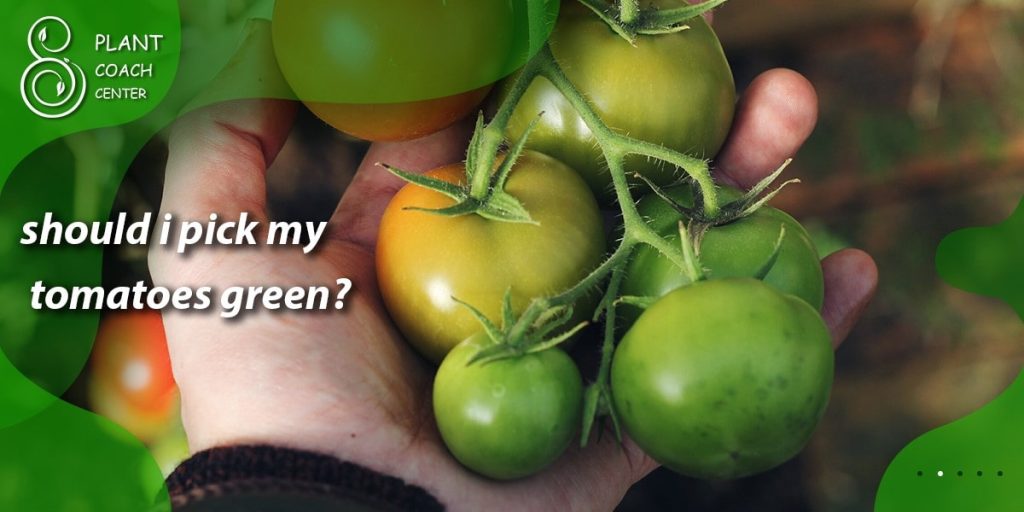
Balancing Taste and Texture in Tomato Harvesting
When it comes to tomatoes, flavor is the crown jewel that dictates the ultimate success of your harvest. However, achieving the perfect balance between taste and texture requires a nuanced understanding of the intricate relationship between these two elements.
Tomato taste evolves as it matures. At the early stages of ripening, tomatoes tend to be more acidic and less sweet. The sugars increase as they progress towards full ripeness, counteracting the acidity and leading to that sought-after sweet-tart balance. This delicate transformation greatly influences the depth and complexity of flavor in your tomatoes.
Texture, on the other hand, is a dance of sensations on the palate. An underripe tomato can be overly firm and lack the succulent juiciness associated with optimal ripeness. Overripe tomatoes might become mushy or mealy, detracting from the eating experience. Achieving the perfect harmony between a tender bite and a satisfying burst of juice involves careful timing in harvesting.
To strike this balance, consider the intended use of your tomatoes. If you plan to savor them fresh, pluck them when ready for that sublime flavor explosion. However, if you envision sauces, salsas, or other culinary creations, slightly underripe tomatoes might be more suitable, offering a firmer texture that holds up during cooking.
Embrace the art of taste-testing as you approach harvest time. Sampling tomatoes as they progress in ripeness allows you to trace the evolution of flavor and texture. Keep in mind that personal preferences vary, so tailoring your harvest to align with your culinary desires is all part of the adventure.
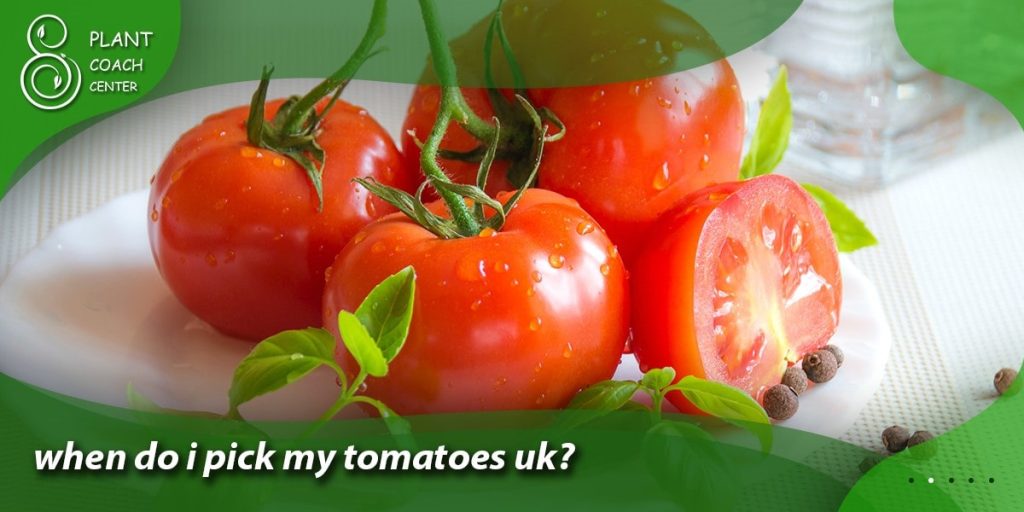
The Finger-Firmness Technique
In tomato harvesting, the finger-firmness technique transcends the visual and engages your senses directly. This tactile approach involves using your fingers to gently press on the tomato’s skin, revealing insights into its readiness for picking.
As you begin your tactile exploration, remember that different tomato varieties possess varying firmness when ripe. Start lightly applying pressure to the tomato’s surface using your index finger. An underripe tomato will feel stiff and unyielding, akin to pressing against a marble countertop. As the tomato matures, it undergoes subtle changes in texture. A tomato at its peak ripeness will yield slightly under the pressure of your finger, feeling akin to pressing against the skin of your palm. This delicate give is a sign that the tomato is reaching its ideal harvest window.
However, there’s an art to this technique. Applying too much pressure can bruise the tomato, compromising its quality. Practice gentleness and finesse in your touch, allowing your fingertips to become attuned to the nuances of texture. Remember that the firmness of the tomato can also vary across its surface, so test multiple areas to get a comprehensive understanding.
The finger-firmness technique doesn’t just provide insight into ripeness; it offers a moment of intimate connection with your plants. It’s a sensory journey that immerses you in the growth rhythm, allowing you to feel the transition from firm potential to tender fruition. As you master this technique, you’ll develop a sensory intuition that guides your hand, ensuring each tomato you pluck is perfectly poised to deliver a burst of flavor and satisfaction.
Weighing the Benefits of On-Plant Ripening
In the captivating world of tomato cultivation, deciding when to pluck your prized tomatoes extends beyond mere timing; it delves into the philosophy of on-plant ripening. Allowing tomatoes to mature fully on the vine versus picking them slightly underripe is a choice that involves a delicate balance of considerations, each bearing its own set of benefits.
The allure of on-plant ripening lies in the promise of flavor perfection. Tomatoes that bask in the sun’s warmth and draw nutrients from the vine tend to develop an intensified sweetness and complexity, embodying summer’s essence. Their journey from flower to fruit unfolds in its entirety, infusing them with a depth of character that’s simply unmatched.
Yet, the path of on-plant ripening has its challenges. Extended exposure to the elements can render tomatoes vulnerable to pests, disease, and unfavorable weather conditions. An overripe tomato might attract unwanted visitors or be prone to splitting, diminishing its quality. Furthermore, the patience required for on-plant ripening demands a watchful eye, as the line between perfectly ripe and slightly overripe can be thin.
Conversely, opting for slightly underripe tomatoes can mitigate these risks. These tomatoes endure the final stage of ripening off the vine, often in a sunny windowsill. This approach can extend their shelf life and mitigate the potential for spoilage. Additionally, the advantage of a controlled environment during this final phase allows you to orchestrate the optimal moment for consumption.
Ultimately, the choice between on-plant ripening and post-harvest maturation hinges on your gardening style, culinary preferences, and garden conditions. Whatever path you choose, remember that each tomato carries a story of growth, flavor development, and meticulous care. Whether you revel in the satisfaction of watching them mature on the vine or fine-tune the final notes of ripeness on your kitchen countertop, the journey of nurturing tomatoes is a narrative that unfolds with every bite.
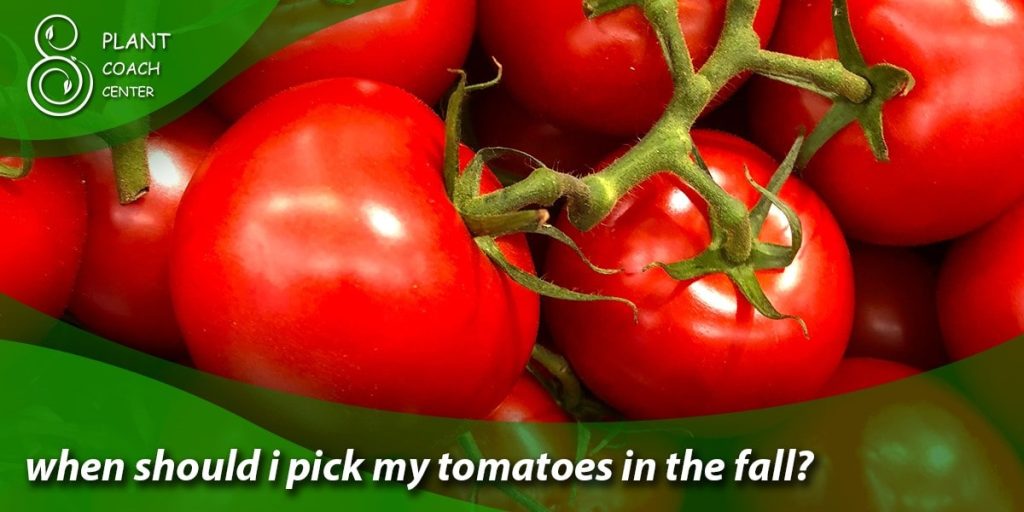
Picking Tomatoes for Storage and Processing
Tomato harvesting isn’t solely about relishing their sun-kissed flavor at the moment; it’s also about capturing that essence to savor throughout the year. If your culinary aspirations include bottling the taste of summer or stocking your freezer with the makings of hearty sauces, the art of picking tomatoes for preservation requires a distinct approach.
For preservation purposes, a delicate balance must be struck between ripeness and firmness. Too ripe tomatoes might not hold up well during processing, resulting in a mushy texture. On the other hand, underripe tomatoes lend themselves better to canning and freezing, maintaining their structure and flavor as they transform from harvest to preservation.
When selecting tomatoes for preservation, opt for those that exhibit a slight give when gently pressed – a sign of the firmness required for successful processing. Harvesting just before the tomatoes reach their peak of ripeness ensures they have a robust structure while still possessing the potential to develop rich flavors during preservation.
Processing methods also influence harvest timing. If canning, slightly underripe tomatoes are ideal, as they’ll soften and intensify in flavor as they simmer in jars. For freezing, tomatoes should be blanched and peeled before freezing; slightly underripe ones can handle the blanching process without becoming overly soft.
Remember that the goal of preserving tomatoes isn’t just to capture their taste and extend their utility. Each preserved tomato promises culinary exploration, allowing you to whip up soups, stews, sauces, and more long after the growing season has passed. So, as you carefully select and harvest tomatoes for preservation, you’re not just bottling summer – you’re bottling the potential for year-round culinary inspiration.
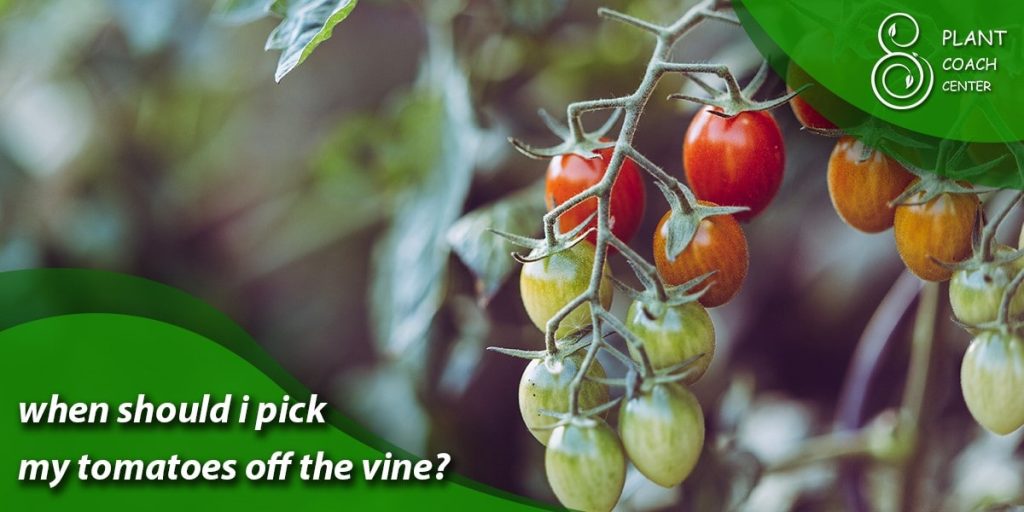
Preventing Tomato Post-Harvest Loss
As you traverse the journey of tomato harvesting, one pitfall that gardeners often encounter is the risk of overripeness after harvest. The excitement of a bountiful harvest can quickly turn into disappointment if tomatoes linger past their prime. To ensure that your efforts yield flavorful rewards, you must carefully navigate the post-harvest phase.
First and foremost, timely harvesting remains paramount. Even after a tomato is picked, it continues to undergo changes in texture, flavor, and overall quality. To prevent overripening, gather tomatoes when slightly underripe, especially if you plan to use them later. This allows a margin of time for them to develop full flavor without crossing the threshold into mushiness.
Storage conditions play a significant role in prolonging the life of harvested tomatoes. The cooler temperatures of a refrigerator can help slow the ripening process, preserving the tomatoes’ freshness for a few extra days. However, remember that refrigeration can potentially diminish the texture and taste of tomatoes, so it’s best suited for tomatoes you plan to use soon.
To extend the life of harvested tomatoes, consider adopting preservation methods such as canning or freezing. These techniques allow you to capture the essence of your tomatoes at their prime and enjoy them long after the growing season has ended. Properly canned or frozen tomatoes retain their flavor, texture, and nutrients, providing a delicious solution to overripening.
Lastly, don’t shy away from culinary creativity to prevent post-harvest loss. Whip up dishes like tomato sauces, salsas, or jams to fully utilize your tomato harvest. These creations can be enjoyed immediately or preserved for future enjoyment, offering a delightful alternative to letting excess tomatoes go to waste.
Conclusion
In tomato cultivation, picking these vibrant gems transcends routine chores, becoming an intricate dance between nature’s signals and our sensory perceptions. As we’ve journeyed through the secrets of ripeness indicators, timing considerations, and the delicate interplay of flavor and texture, we’ve unveiled the essence of mastering tomato harvesting.
Whether you’re drawn to the sensory finesse of the finger-firmness technique, navigating the complexities of preservation, or embracing the choice of on-plant ripening, each tomato tells a story of growth, care, and culinary potential.
At plantcouchcenter.com, we invite you to cultivate tomatoes and a deeper connection to gardening. With these insights in your toolbox, you’re poised to pluck each tomato at its zenith, transforming your harvest into a symphony of flavor that resonates far beyond the season’s end.
How do I know when to pick tomatoes?
Observe color texture and use the finger-firmness technique.
What factors influence tomato harvest timing?
Weather, variety, growth stage, and local climate are key factors.
Can I preserve overripe tomatoes?
Yes, by canning, freezing, or turning them into sauces and jams.


